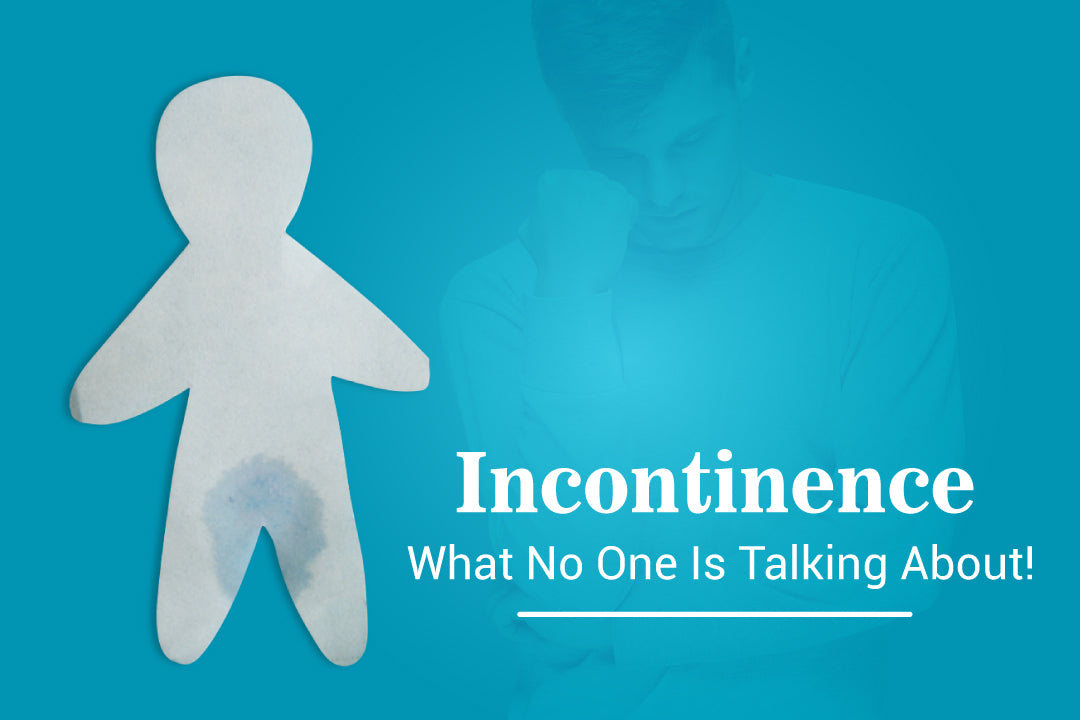Incontinence, What No One Is Talking About

Incontinence, What No One Is Talking About
Incontinence is a condition in which the bladder muscles are not strong enough to hold on to the urine or feces and causes involuntary leakage. It may be a result of old age, mobility impairment, any underlying medical condition, accident, or a cognitive disorder. A person can leak while sneezing or coughing too and also feel the sudden urge of going to the washroom every time.
Types of Incontinence
Though it occurs more often among older people, urinary incontinence isn’t an inevitable cause of aging. There are several types of incontinence.
Stress incontinence: Stress Incontinence may occur due to the stress caused on the bladder while coughing, sneezing, lifting heavy objects, exercising, or any other activity that creates pressure on the bladder.
Overflow incontinence: It is a form of urinary incontinence where there is an involuntary loss of urine from an overfull bladder even when there is no urge to urinate. This is also known as Dribbling.
Functional incontinence: Functional Incontinence occurs when there is an urge to urinate but the person is not able to make it to the bathroom on time due to some physical disability or medical condition like arthritis. The loss of urine could vary from small leakages to the full emptying of the bladder.
Mixed incontinence: Mixed Incontinence is usually a combination of Stress and Urge Incontinence. Thus, a person may experience symptoms of both. It is more common among females.
Urge incontinence: Also known by the name of Overactive Bladder (OAB), Urge Incontinence is when a person feels a sudden urge to go to the toilet but is not able to make it on time. It can be caused due to a minor infection or something more severe, like a neurological disorder or diabetes.
Total incontinence: This is a condition when the bladder is not able to store urine at all. This makes one pass urine constantly or frequently.
Causes of Incontinence
One needs to realise that urinary incontinence is not a disease; it is a symptom. It can be a result of everyday habits, physical problems, or medical conditions.
Temporary Urinary Incontinence may occur due to the intake of certain drinks, including alcohol, caffeine, carbonated drinks, sparkling water or, artificial sweeteners. It can also result from certain foods like chocolates, chilli peppers, spicy or acidic foods or, citrusy fruits. In some people, incontinence triggers with the intake of certain heart or blood pressure medicines, sedatives, or muscle relaxants.
Urinary Tract Infection (UTI): UTIs can sometimes irritate the bladder and cause Temporary Incontinence in some people. Incontinence may also occur from constipation in some cases. The rectum is located near the urinary bladder and shares the same nerves. In some cases, a hard stool can cause these nerves to be overactive and increase urine frequency.
Menopause: In some cases, after menopause, women produce less estrogen that may weaken the urethra. This impairs one’s power to hold urine for much longer intervals.
Pregnancy: Hormonal changes or the increased weight of the foetus can lead to Stress Incontinence.
Childbirth: Natural delivery or use of the forceps can weaken the muscles needed for bladder control, resulting in a dropped pelvic floor. The bladder, rectum, uterus, or small intestine can get displaced from their original position and sometimes protrude into the vagina. This can lead to urinary incontinence in women.
Excessive Body Weight: Being overweight can also cause incontinence as it creates more pressure on the bladder.
Prostate Problems: Men who suffer from prostate enlargement or go through prostate surgery tend to have Stress or Urge Incontinence.
Neurological Disorders: The Nervous system controls the brain, spinal cord, and other nerves of the body. It also plays an imperative role in controlling the storage and passing of urine. Any damage to it can interfere with the nerve signals controlling the bladder and thus lead to incontinence.
Hysterectomy: Any kind of surgery involving a female’s reproductive organ can sometimes damage the muscles and ligaments that support the urinary bladder. This result is Urinary Incontinence in women.
How to Treat Urinary Incontinence?
According to your symptoms, you can visit the doctor and get a treatment plan created. Some of the basic treatments include:
Medication: If you suffer from urinary incontinence then taking over-the-counter medication can help calm down the muscles and nerves surrounding the bladder and reduce bladder spasm.
Devices: For women, incontinence can also be controlled by inserting a pessary into the vagina as it helps in repositioning the urethra, thus preventing any leakage.
Surgery: In some cases, if a person suffers from severe incontinence, doctors might suggest the Sling procedure in which a small mesh is used to support the bladder that helps in suppressing incontinence.
Bladder Training: You can start using the restrooms at regular intervals rather than waiting for the urge to go to the washroom. This helps in getting control over the bladder and helps in curbing incontinence.
Lifestyle Changing Tips for Incontinence
Drink A Lot of Water: Generally, people who suffer from incontinence cut back on the water which is very unhealthy. Drinking less water can worsen the problem. Therefore, you should drink at least 8-9 glasses of water daily.
Lose Weight: Obesity is a significant cause of leaky bladders, thus people suffering from incontinence should keep a track of their weight which can be very helpful.
Quit Smoking: People who smoke are more prone to have incontinence than people who do not. Thus, stop smoking and keep your bladder healthy.
Track Your Eating Habits: If you suffer from incontinence then cutting back on alcohol, carbonated drinks, spicy food, and acidic things may help improve the symptoms.
Kegel Exercises: Practicing Kegel Exercises a few times a day can help strengthen your pelvic floor muscles. Squeeze your pelvic muscles on an empty bladder for a count of five and then relax them for 5 seconds. Try this rep few times a day.

